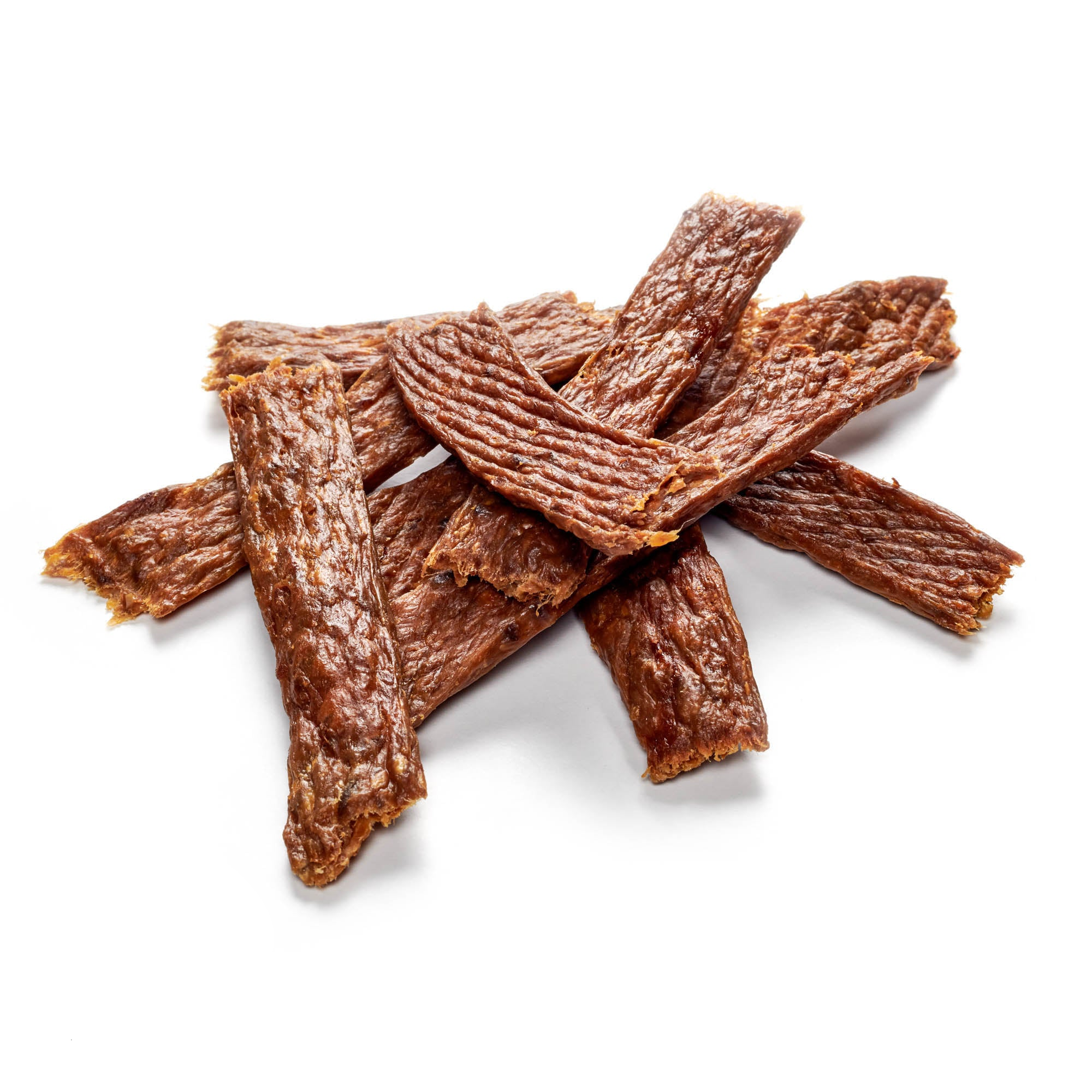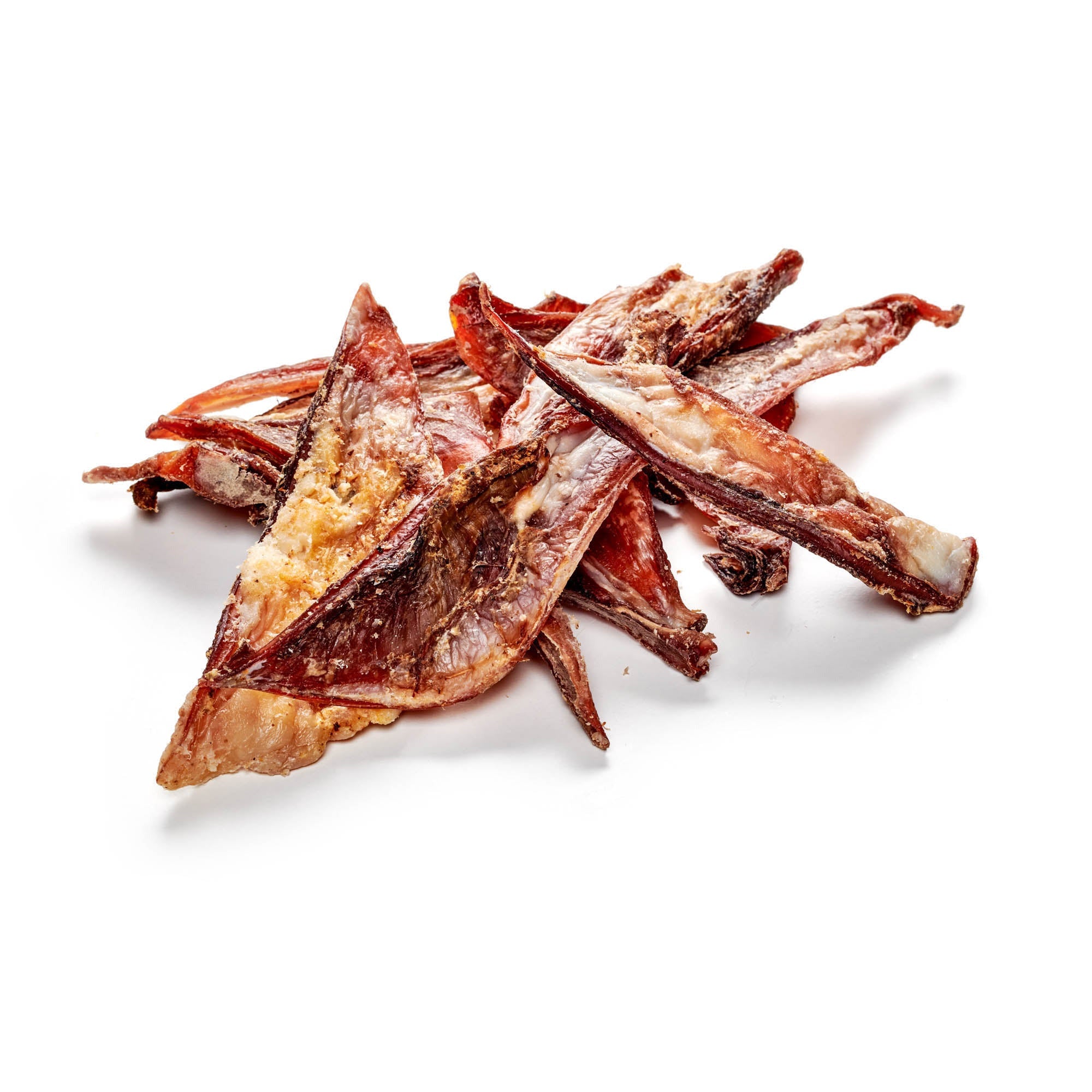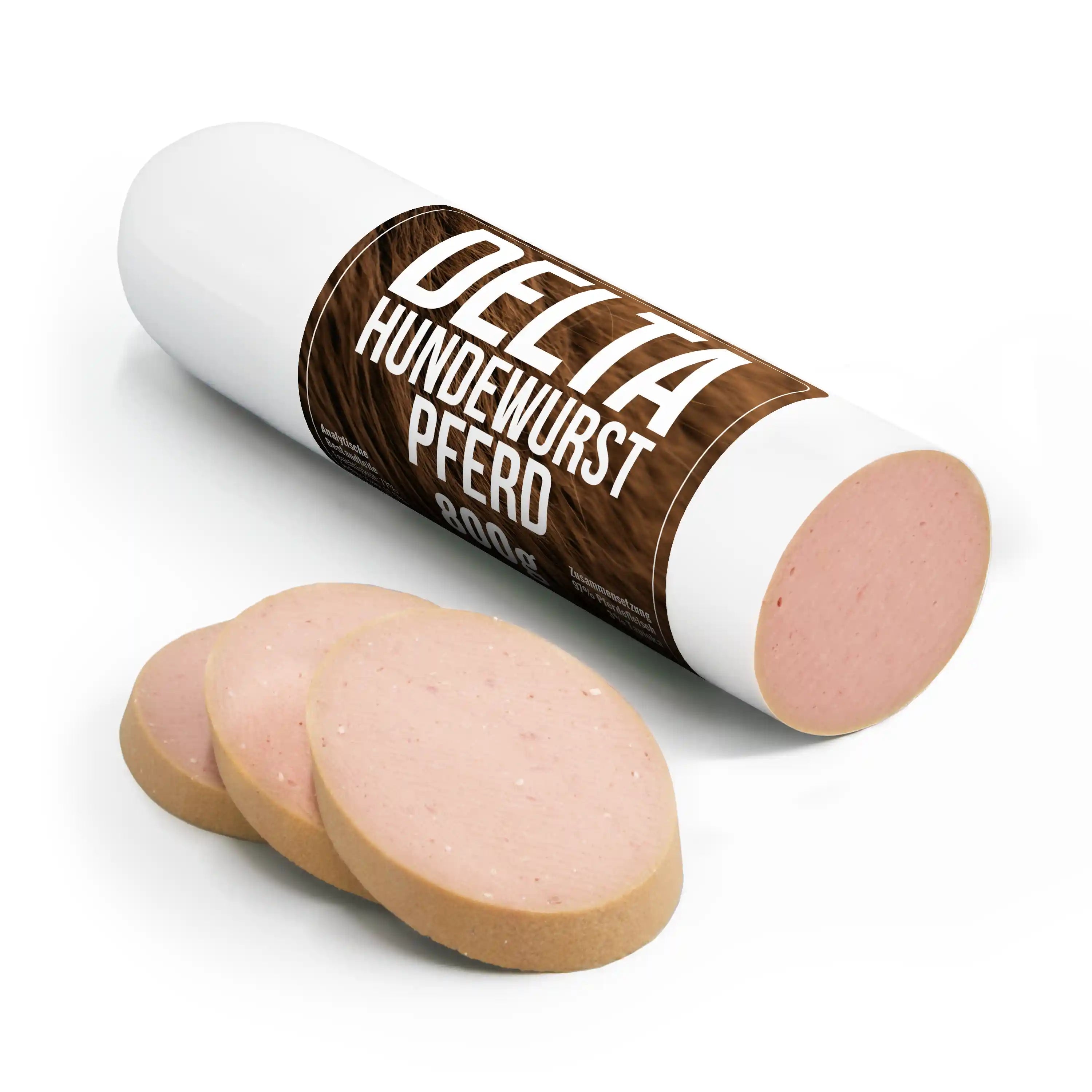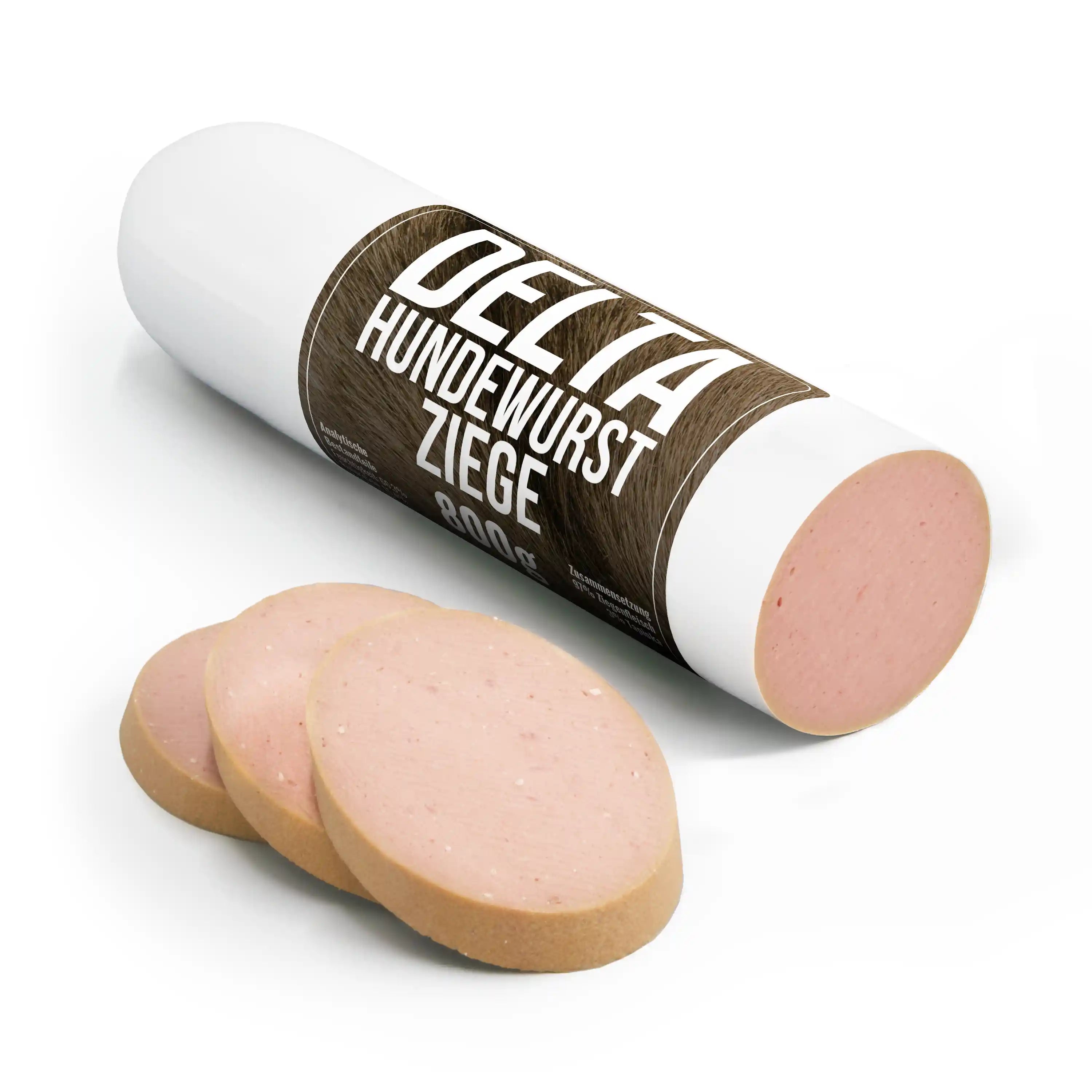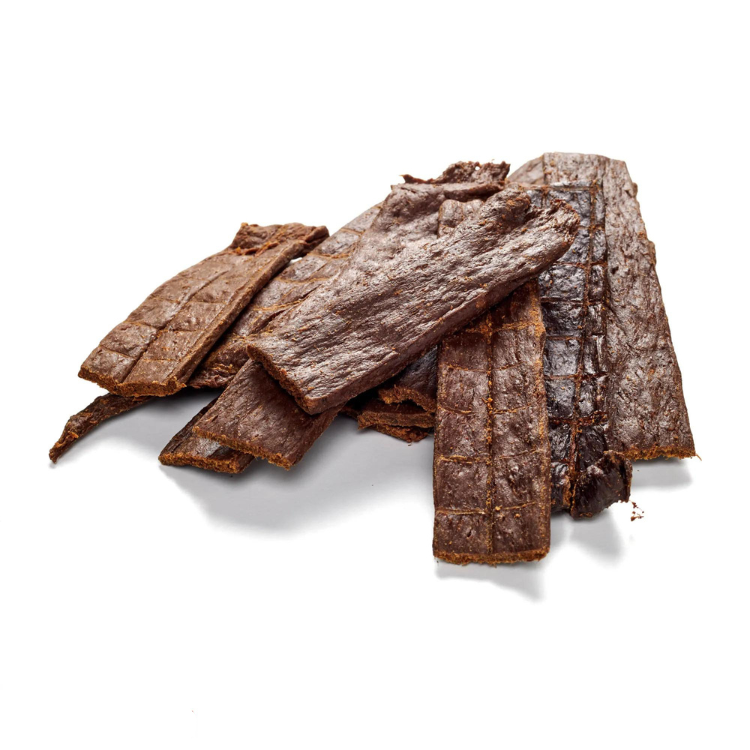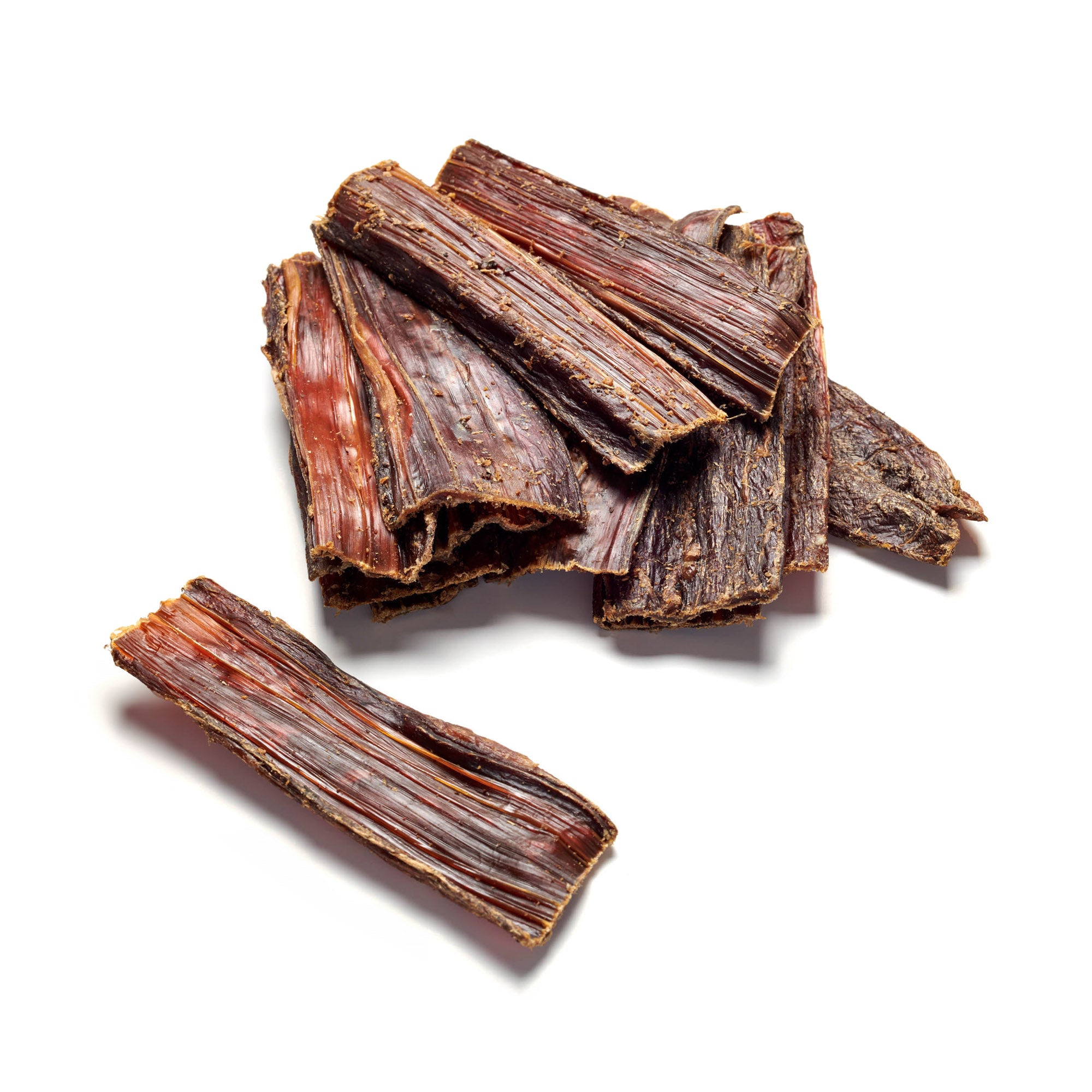
Australian Cattle Dog
Share
The Australian Cattle Dog, also known as the Blue Heeler, is one of the most valued dog breeds. It is a reliable herding and herding dog and also a faithful, loyal companion. Its powerful build and distinctive coat pattern give it an impressive appearance. However, with its self-confidence and intelligence, it is a demanding dog that does justice to experienced owners.
Content: Australian Cattle Dog
- profile
- Special features
- Nutrition
- Health and care
- Origin & History
- The right accessories
- Conclusion
Spoil your dog with high-quality chewing products from our range!
Australian Cattle Dog - Profile
- Character: Alert, Curious and Pleasant
- Size: Medium
- Height: 43-51 cm
- Weight: 15-18 kg
- Life expectancy: 10-16 years
- Coat type: Smooth, double coat
- Colour: Blue, blue spotted or blue speckled, with or without other markings; red speckled
- Special features: Known for its endurance and work ability
- FCI Group: Herding dogs, Cattle dogs
Australian Cattle Dog - Special Characteristics
The Australian Cattle Dog is a medium-sized dog breed with a remarkably compact and muscular build. Its coat is smooth, short and has a dense undercoat. What makes this dog particularly special are its characteristic coat colors, which occur due to a genetic defect. These colors include blue speckled, blue spotted, red speckled and red spotted. At birth, the puppies usually have white fur, sometimes barely visible spots are already visible. The typical coat patterns only develop over time.
The Australian Cattle Dog is not only physically strong, but also exceptionally intelligent, confident, alert and courageous. Due to its breeding, it has a strong herding and protective instinct and shows a strong sense of duty. Its need for activity and exercise is also high, and it needs meaningful and varied activities that meet its intelligence and need for exercise. Recommended activities include intelligence games, various dog sports and tasks in the area of obedience and alertness. In addition, the Australian Cattle Dog's intelligence and friendliness make it well suited to therapeutic work with mentally impaired people and search and rescue of people. This breed shows a strong bond with its owners and is an excellent companion for cycling and jogging. If well trained, they can enjoy long runs. In a family environment, the Australian Cattle Dog integrates well into the pack and enjoys participating in joint activities. However, it can tend to develop a close bond with a single person in the family and shows natural protective behavior towards strangers. A solid upbringing with clear boundaries and respect is crucial to preventing any behavioral problems.
Australian Cattle Dog - What should you consider when feeding them?
The Australian Cattle Dog is an easy eater with normal nutritional requirements, although the breed is considered "greedy". It is important to adjust the daily amount of food to the individual physical condition and activities of the dog. An adult Australian Cattle Dog usually weighs about 20 kilograms, while a four-month-old puppy reaches about half of its final weight. Proper nutrition should begin in puppyhood and continue throughout adolescence and adulthood.
Because the Australian Cattle Dog is a predator by nature and has high energy needs, its food should be of high quality and consist mainly of meat . It should contain all the required nutrients and vitamins. It is important not to feed table scraps, bones, fatty foods or sweets. Good dog food does not contain additives, flavor enhancers, colorings, allergens or fillers. Occasional dry chews such as beef tendons, beef ears and tripe can provide a tasty change while strengthening the teeth and chewing muscles. Dog treats are popular and can help with dog training and motivation, but it is important to choose high-quality products and use them in moderation. Make sure your dog always has access to fresh water.
Australian Cattle Dog - Health and Care
The Australian Cattle Dog has an easy-care, short-haired and weatherproof coat that requires only moderate and simple care. Usually, brushing the coat once a week is enough. During the shedding period, which occurs about 1-2 times a year, excess hair can be removed by brushing the dog several times a week. Occasional washing with a special shampoo after swimming helps eliminate unpleasant odors and the coat dries faster. The dog's claws should be groomed regularly, and if they do not wear down naturally, they can be trimmed with special scissors, being careful not to cut too deeply. Eye and ear care should also be done regularly to remove dirt. Changes on the skin such as spots, scabs or blood may indicate disease or parasites and require veterinary treatment.
Australian Cattle Dogs can also suffer from hereditary diseases related to their coat color. White-coated dogs are often deaf due to a lack of color pigment cells in the inner ear. Some dogs can suffer from eye diseases such as lens luxation (PLL), which can cause cataracts and, if left untreated, blindness. Other possible diseases include nerve diseases, polioencephalomyelopathy, skeletal hyperthyroidism (DISH) and spondylosis.
Reward your best friend with our dog treats!
Australian Cattle Dog - Origin & History
The origins of the Australian Cattle Dog date back to early Australian settlers who prized this breed of dog for driving large herds of cattle. In 1830, cattle breeder Thomas Hall brought blue-patterned working dogs from northern England to Australia, known as Drover Dogs. Thomas Hall began selective cross breeding, combining these dogs with native dingoes to create a new breed called Hall's Heeler. Over time, genes from bull terriers, kelpies and dalmatians were also incorporated into the breeding.
The result was an extremely hardy and agile working dog that was able to drive semi-wild herds of cattle over long distances in Australia, even under the most adverse climatic and landscape conditions. In the 19th century, the Australian Cattle Dog developed into the most important breed of cattle dog on the Australian continent. The blue variant (Blue Merle) took part in an exhibition for the first time in 1897, and in 1903 the first breed standard was established by the breeder Robert Kaleski.
Australian Cattle Dog - The right accessories
To ensure that your beloved pack member feels comfortable in his home, there are some important preparations to be made. These include suitable food bowls and water bowls to meet his food and drink needs. A suitable dog leash is crucial for pleasant and pain-free walks. In addition, a comfortable resting place with a blanket or dog bed should be available, in a place where there is no draft and where the dog can see everything. The dog often chooses his favorite place himself.
Appropriate toys are essential for entertainment and to avoid boredom. It is also advisable to have a dog carrier or a safety device for car journeys to ensure the dog's safety. Adequate exercise is crucial for keeping an Australian Cattle Dog in a species-appropriate manner. This is most fun in the great outdoors, so a rural house with a garden is preferable to a small city apartment.
Conclusion
The Australian Cattle Dog, also known as the Blue Heeler, is an impressive breed of dog with a combination of physical strength, intelligence and loyalty. Its origins as a working dog for herding cattle herds give it its robust nature and natural grace. These dogs are not only reliable working animals, but also loving companions for experienced owners who can meet their needs. Proper training, sufficient exercise and a balanced diet are crucial to their health and well-being. Despite their robust nature, they require loving care and attention to strengthen their bond with their owners and avoid potential behavioral problems. With a rural lifestyle and appropriate accessories, Australian Cattle Dogs can lead full and active lives that match their natural disposition.
Reward your best friend with our dog treats!

